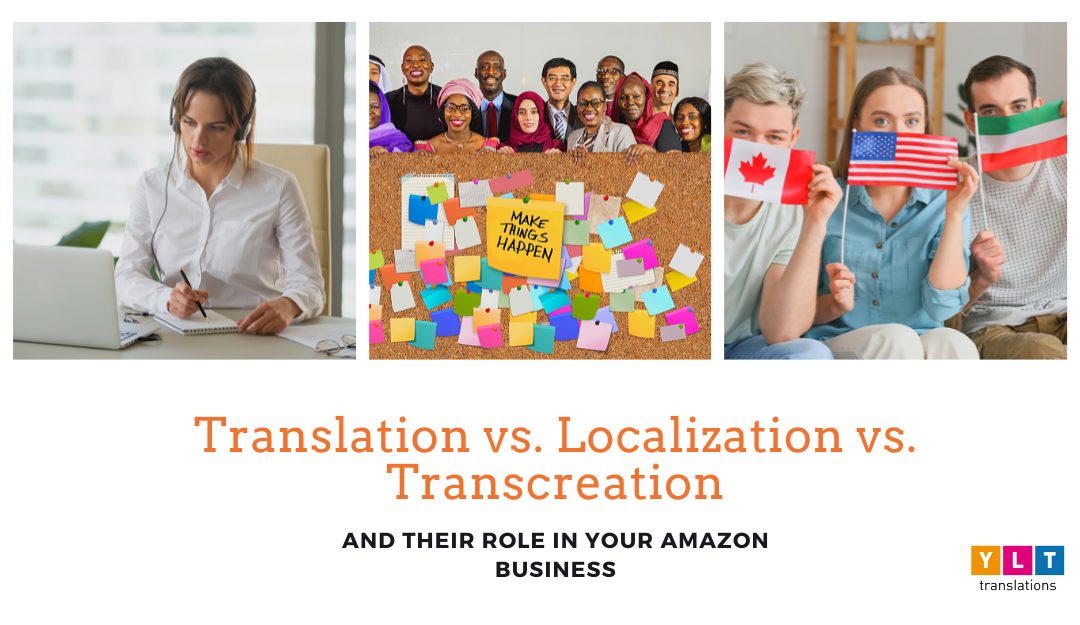Transcreation. It’s a bit different from localization. The latter’s origins are in software development, and involves the translation of content so it remains functional across different countries and cultures. The former meanwhile is a marketing and branding term. It refers to the practice of transposing content so it engages audiences on an emotional level.
Transcreation vs. Translation vs. Localization – it can be a bit confusing because these practices are very similar. At the simplest level, you have translation. Often used in the medical and legal fields, translated content sticks 100% to the original source content. Any variation could result in massive confusion, and overall be bad for business. Next, you have localization. That’s making sure your content means the same thing in Mexico as it does in Spain – and in India, Korea, and Canada. Transcreation meanwhile is often performed by copywriters, as opposed to translators, because of the emotional connection that transcreation needs to inspire, The road to a Spaniard’s heart isn’t exactly the same path as the road to a Mexican’s heart!
Transcreation appears all over the place. Transcreation in art lends a lot to a brand’s reputation and positioning across cultures. Take Puma’s red, green, black, and white trainers. The creative translation failed miserably in the UAE, whose flag colors mirrored the colors of the trainers. In their culture, feet are unclean – so wearing the national flag’s colors on one’s feet is considered a huge cultural faux pas! You’ll see multinational firms perform transcreation on their content as they transfer advertising and marketing from one country to another. Think of McDonald’s TV ads translated into different languages, using actors from that culture, and shot in venues reflective of that culture.
Speaking of McDonald’s – transcreation in literature is crucial in slogans. The iconic “I’m Lovin’ It” slogan works well across all cultures. KFC meanwhile didn’t have as much luck; “finger-lickin’ good” in Mandarin translates to “eat your fingers off!” That’s not very appetizing, is it?
Your Amazon business needs transcreation too. You can’t just translate keywords. You need totally new keywords for different cultures. So – you need to transcreate your keywords.
Put it this way. In the USA, they’re called diapers. In the UK, they’re called nappies. So the difference in keywords needs to reflect in your listing. However, the differences can occur across states and towns as well! in New York, it’s known as a backpack, but in Pennsylvania, they’re known as book bags. Understanding how your customers speak is crucial to conversions and engagement.
People search for products in different ways. Perform keyword research in every place separately. Use Helium 10 and Data Dive for on-point keyword research across cultures.
Also, consider that the goal of transcreation is to resonate with your target markets across all your different cultures. That’s why many companies choose copywriters to perform the transcreation, as opposed to translators, who may not be equipped with the necessary language to evoke an emotional response.
Here’s How to Transcreate Content:
- Understand the customer. How do they speak? What pop culture references are they into? What triggers and offends them? What do they look forward to? Each culture has its own nuances and differences. Stay on top of that cultural context, so you can be sure your content resonates with your target market.
- Understand the brand goals and brand positioning. The goal is to convert and engage across cultures – but you don’t want to dilute your messaging. Make sure you don’t lose the context of the brand when you translate from one culture to another. Communicate the same brand feel for better brand recall.
- Assign it to a native speaker. Thank goodness our translators are writers, as well! That’s why it’s so easy for us to localize and transcreate. We cover the technical aspect through thorough awareness of Amazon’s terms and conditions, and a solid keyword strategy. We cover the emotional aspect because our translators are native speakers. They understand what people in their cultures think, feel, want, and need.
- Perform keyword research. As mentioned above, it’s crucial to redo keywords per culture. People call things differently; make sure you speak their language so you (a) get in front of them, and (b) convert them.
Here’s the big question.
Do you need localization or transcreation?
Good thing we have the answers for you. Contact us at https://ylt-translations.com/contact-free-listing-analysis/ and we’ll take a look for you. Talk soon!
